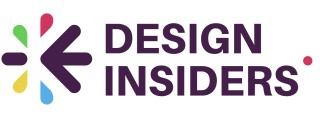
Understanding the Impact of Expiring Loyalty Points
Impacts of Expiration on Customer Loyalty Programs
Expiring loyalty points can have a significant impact on customer loyalty programs by influencing customer behavior and overall engagement. The concept of point expiration, though aimed at encouraging timely redemption, can be a double-edged sword. On one hand, setting a defined expiration period can motivate members to actively earn and redeem points within a specified time frame. This approach can reduce the breakage rate, which refers to the proportion of points that expire without being redeemed. A well-balanced point expiration strategy encourages customers to interact with the brand more frequently, driving increased sales and customer loyalty.
However, the expiration of loyalty points can also lead to dissatisfaction if not well communicated, potentially affecting the customer's perception of the brand. Customers who feel uninformed or rushed may not fully engage with the loyalty program or may even develop negative associations with the brand. It's crucial for businesses to design seamless user experiences that consider the emotional impact of point expiration on customers.
Furthermore, understanding the customer profile is important in determining how expiration settings are set. High point balances that customers are unable to redeem before they expire can lead to wasted rewards and decreased satisfaction. Businesses must consider not only their business goals but also the needs and preferences of their customers when defining expiration policies. By doing so, companies can create loyalty programs that both enhance customer satisfaction and support long-term brand engagement.
Designing Clear Communication Strategies
Crafting Effective Notifications and Alerts
Communicating the expiration of loyalty points in a clear and timely manner is crucial for maintaining customer trust and encouraging points redemption. Well-designed notifications can significantly impact the way customers interact with a loyalty program. Here are a few strategies to consider:- Personalized Messages: Customize messages based on the customer profile. By addressing customers by name and referencing their specific points rewards, brands can create a more engaged and personalized experience that may motivate users to take action.
- Timely Alerts: It's important to inform members about the points expiration well in advance. Setting up notifications at different intervals before the points will expire can remind customers to redeem points. This approach can improve redemption rates and reduce breakage.
- Multichannel Communication: Ensure that the communication strategy spans multiple channels, including email, in-app notifications, and even SMS. This ensures that customers receive the message regardless of their preferred communication method.
- Transparent Information: Clearly state the expiration period and settings in the program's terms and conditions. This transparency helps manage expectations and strengthens customer loyalty in the long term.
- Encouraging Engagement: Besides informing customers, notifications should encourage immediate action. Phrases like "redeem now" or "act soon" can provide a subtle nudge to use points before they expire.
Incorporating User Feedback into Design
Gathering and Utilizing User Insights
In any loyalty program, ensuring that members are satisfied and engaged is crucial. Gathering user feedback provides invaluable insights into how customers interact with loyalty points, rewards, and the overall program. Personalizing the program based on the customer’s interaction with your brand can significantly enhance customer loyalty and experience.
Start by analyzing user interactions and feedback to understand their preferences for point expiration. Understanding the emotional response and behavioral patterns of members when points expire or rewards are almost out of reach will help refine expiration settings. Close attention to their feedback can highlight common user frustrations or confusions regarding point expiration, which can guide better communication strategies.
Regularly updating user feedback channels, whether through surveys or direct inquiries, allows loyalty programs to evolve with changing customer expectations. This feedback loop not only bolsters existent strategies but helps discover potential breakage issues where points will expire unused, causing a decrease in customer satisfaction. The analysis of long-term engagement patterns can provide insights into optimal expiration periods and settings.
Consider integrating direct customer suggestions into the reward redemption process or loyalty program features, which can make members feel valued and heard. Addressing issues like the clarity of expiration time frames or the ease of redeeming points required for specific rewards ensures that your loyalty program remains competitive and user-focused.
Ultimately, learning from the voice of the customer helps businesses keep the breakage rate manageable and programs more appealing and supportive of both business and customer goals, keeping that essential balance top of mind. Building a customer profile based on feedback can personalize and streamline the loyalty experience for each member, increasing the likelihood of them regrouping their earned points effectively.
Balancing Business Goals with User Needs
Striking a Balance between Company Objectives and User Satisfaction
Balancing business goals with user needs is crucial when dealing with loyalty points that expire. The primary aim of most loyalty programs is to encourage repeat purchases by offering enticing rewards. However, setting an expiration date on these points can generate a breakage rate that affects both the brand and its members. While breakage — the percentage of points that expire — can be beneficial for managing the program's financial liability, it's essential to ensure that it's not at the expense of customer loyalty. To align business objectives with customer satisfaction, brands should consider:- Transparent Expiration Policies: Clear communication about when points will expire helps customers plan how and when to use their rewards. This minimizes frustrations and aligns with the principle of designing clear communication strategies.
- Flexible Redemption Options: Offering a range of redemption choices enhances the perceived value of the loyalty program. By providing flexibility, brands can meet varying customer profiles and preferences.
- Personalized Reminders: Sending personalized notifications to remind users of their pending point expiration encourages immediate engagement, reducing breakage rates and reinforcing the perceived value of points earned.
- Analysis of Expiration Impact: Continuously monitoring how expiration periods affect user behavior and satisfaction offers insights into whether the loyalty program is achieving its intended outcomes. Adjustments can then be made based on collected user feedback, taking into account the balance between long-term customer loyalty and short-term business gains.
Innovative Solutions for Expiring Points
Creative Approaches to Address Point Expiration
Expiring loyalty points can cause frustration among customers if not managed with innovative strategies. It's crucial to explore creative solutions that not only reduce the breakage rate but also maintain strong customer loyalty. One effective strategy is gamification, which can help businesses engage their members while making the loyalty programs more interactive. By converting earning points into games or challenges, customers feel more invested and motivated to participate regularly. This fosters a deeper connection with your brand and can even lead to increased earning of points. Another approach is offering exclusive incentives for points that are close to expiration. These rewards can be tailored based on the customer profile to ensure they're enticing enough to prompt redemption. It might include exclusive access to special deals or limited-time offers that align with the brand's long-term goals. Points pooling is another innovative way to enhance the flexibility of a loyalty program. Allowing members to combine points with family or friends reduces the likelihood of points going unredeemed. It additionally creates a sense of community among participants, enhancing overall satisfaction with the program. Lastly, automation in communication settings plays a pivotal role. By setting up timely notifications that remind customers of the approaching expiration period, businesses can limit the number of points that will expire. These notifications can also provide information on how to redeem points quickly, thus optimizing the customer experience and ensuring loyalty rewards are utilized efficiently. Integrating these solutions can significantly enhance the loyalty points program's effectiveness, ensuring it meets both business goals and customer expectations.Case Studies of Successful Loyalty Programs
Real-World Examples of Effective Loyalty Programs
Exploring successful loyalty programs can provide valuable insights into how brands effectively manage expiring points while enhancing customer loyalty. These case studies demonstrate the balance between business objectives and customer satisfaction, showcasing innovative strategies that have proven effective in real-world settings.
Retail Giant's Tiered Loyalty Program
A well-known retail brand implemented a tiered loyalty program that effectively manages point expiration. By offering different levels of membership, customers are encouraged to earn points and move up the tiers, unlocking more rewards. This approach not only motivates members to engage more frequently but also reduces the breakage rate of points that expire. The program's clear communication strategy ensures customers are aware of their points expiration period, enhancing transparency and trust.
Airline's Dynamic Expiration Policy
An international airline revamped its loyalty program by introducing a dynamic expiration policy. Instead of a fixed expiration period, points earned are set to expire based on customer activity. This encourages frequent engagement, as members who regularly earn points or redeem points see their expiration period extended. This innovative solution aligns with both customer needs and business goals, reducing the likelihood of points breakage while fostering long-term loyalty.
Subscription Service's Personalized Rewards
A leading subscription service has successfully integrated user feedback into its loyalty program design, offering personalized rewards based on customer profiles. By analyzing customer behavior and preferences, the brand tailors its points rewards to individual members, ensuring that the points earned are relevant and valuable. This personalization not only enhances the customer experience but also increases the likelihood of points redemption before they expire.
These case studies highlight the importance of designing loyalty programs that consider both the expiration of points and the overall customer experience. By implementing clear communication strategies and incorporating user feedback, brands can create loyalty programs that effectively balance business goals with customer satisfaction.














